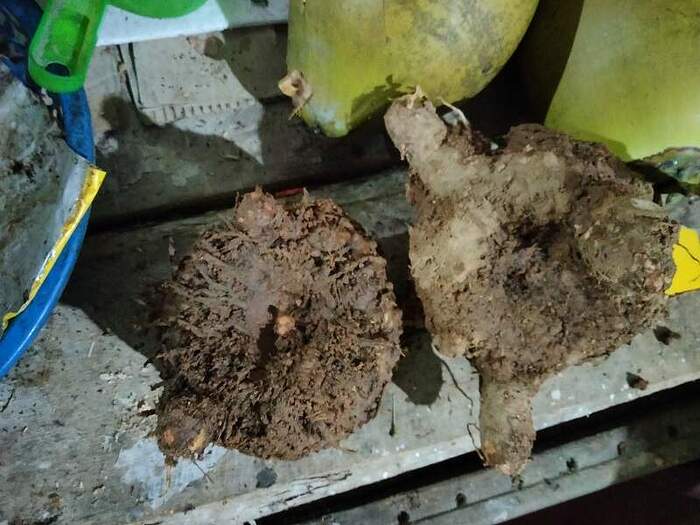Oh that’s the one? I had heard the name, and possibly eaten it too but didn’t know it was elephant foot yam. It grows in the dry zone I guess. I must ask someone who knows about this stuff here.
It’s funny I didn’t know such a common thing (and kind of embarrassing to hear the name from someone so far away from here which should’ve been other way round  )
)
Nah, I just love it and it’s grown in India, so I googled it for Sri Lanka 
I always found the English name hilarious, going back to when I was a kid.
I may have a source for elephant foot yam corms and hope to try growing it here. Other Amorphophallus species do well in our tropical, hot growing season. How does one cook elephant foot yam, as it does have raphides? I seem to remember tamarind goes into the pot.
I’ll be on the lookout for Ratalu; thanks for the tip! It may also grow well here.
So, after my ignorance about elephant yam was revealed, I called someone from the low country and got these pictures just a few minutes ago.
Does your friend in the low country know how to cook it?
Yeah they know I suppose. When I asked her if they eat it she said yes. I think they make a curry from it. I’ll ask her tomorrow how they prepare it. Too late now. 23.49.
I happened to go to where the above elephant foot yam was. And December is the time when all yams are ready for harvesting. I took photos of exactly that yam, and also some lesser yams. (I mean the other yams are not less than the elephant foot yam, but those yams are called “lesser yam” ![]() )
)
first photo is the dead plant you can see under the pennywort leaves.
Second one - the yam, the one on the right with two “horns” jutting out, and another elephant foot yam.
Third - lesser yams and elephant foot yam.
That elephant yam is kind of intimidating! I’m still curious how one gets the stinging raphides out of it to make it edible. With our hot, tropical summers, I bet the plant would thrive here.






